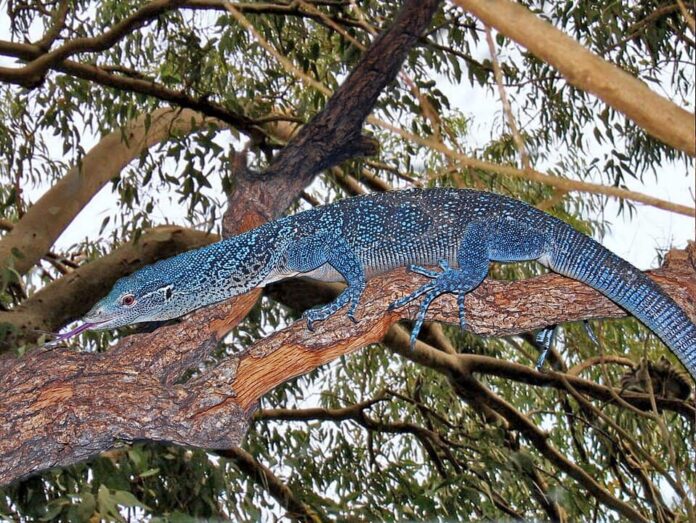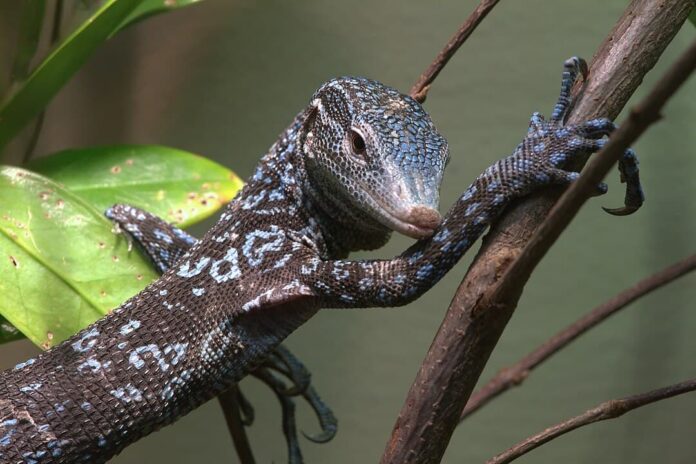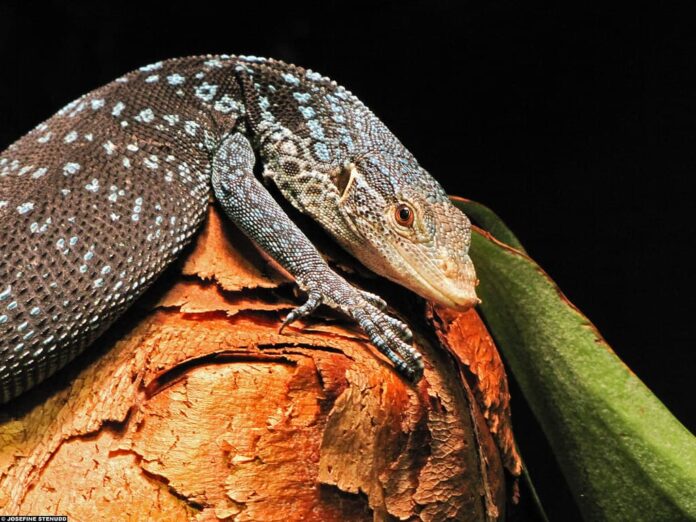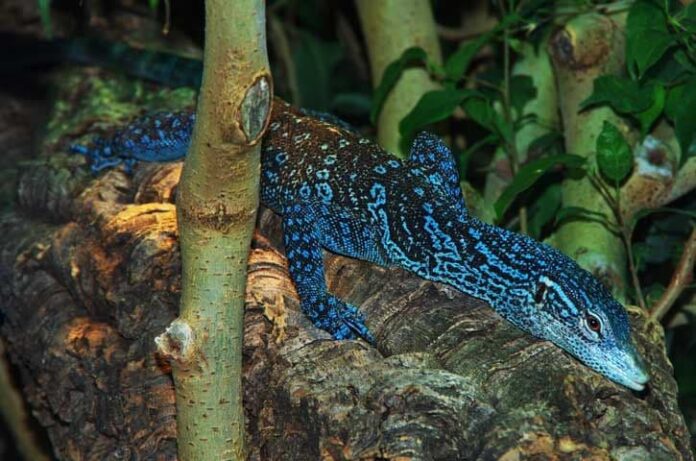Blue animals are always super eye-catching to look at, and blue-spotted tree monitor is one of them. While most monitors in the family are darker in color, this species is rather different. Coming across one of them can be rare, and they are endangered due to habitat loss and pet trade. In case you haven’t heard of this lizard, feel free to find out more about this interesting creature.
1Appearance

Just like the name suggests, the black and dorsolaterally flattened body of this reptile is scattered by blue scales. Together, it looks like there are ocelli across its body as well as its limbs, and the head is fully covered by blue scales. There are also light blue scales on its snout along with green scales along the lizard’s neck. An adult male blue-spotted tree monitor can reach up to 1.1 meters, with his prehensile tail taking two-thirds of the total length. Females are only around 10 centimeters shorter, and their overall appearance looks the same. As for the tongue, it is pale pink.
2Behavior

Blue-spotted tree monitors are both arboreal and diurnal, so they only come out to hunt during the nighttime. They spend their daytime hiding in the tree, and they rarely come down to the forest floor. Thanks to their sharp claws, climbing trees and holding on to almost any rough surfaces are just simple daily tasks. On top of that, their prehensile tails are not only for aiding their climbing. That is not all, these monitors also use their tails as a weapon when they feel threatened. A blue-spotted tree monitor coils its tail and rapidly uncoils it to create a whip to shock the predators before fleeing up the tree.
3Feeding & Habitats

Being so rare, the distribution of this lizard species is only on the island of Batanta, Indonesia. Having such a limited range, these arboreal lizards inhabit tropical forests with large trees to climb. Not so different from other monitors, this one is also a carnivore so they feed on various insects and small animals. Blue-spotted tree monitors’ most common food includes beetles, crickets, grasshoppers, katydids, moths, small eggs, smaller lizards, and stick insects. Sometimes they also feed on berries, so that simply makes them not 100% carnivorous.
Related Post: Blue-Crested Lizard Facts





